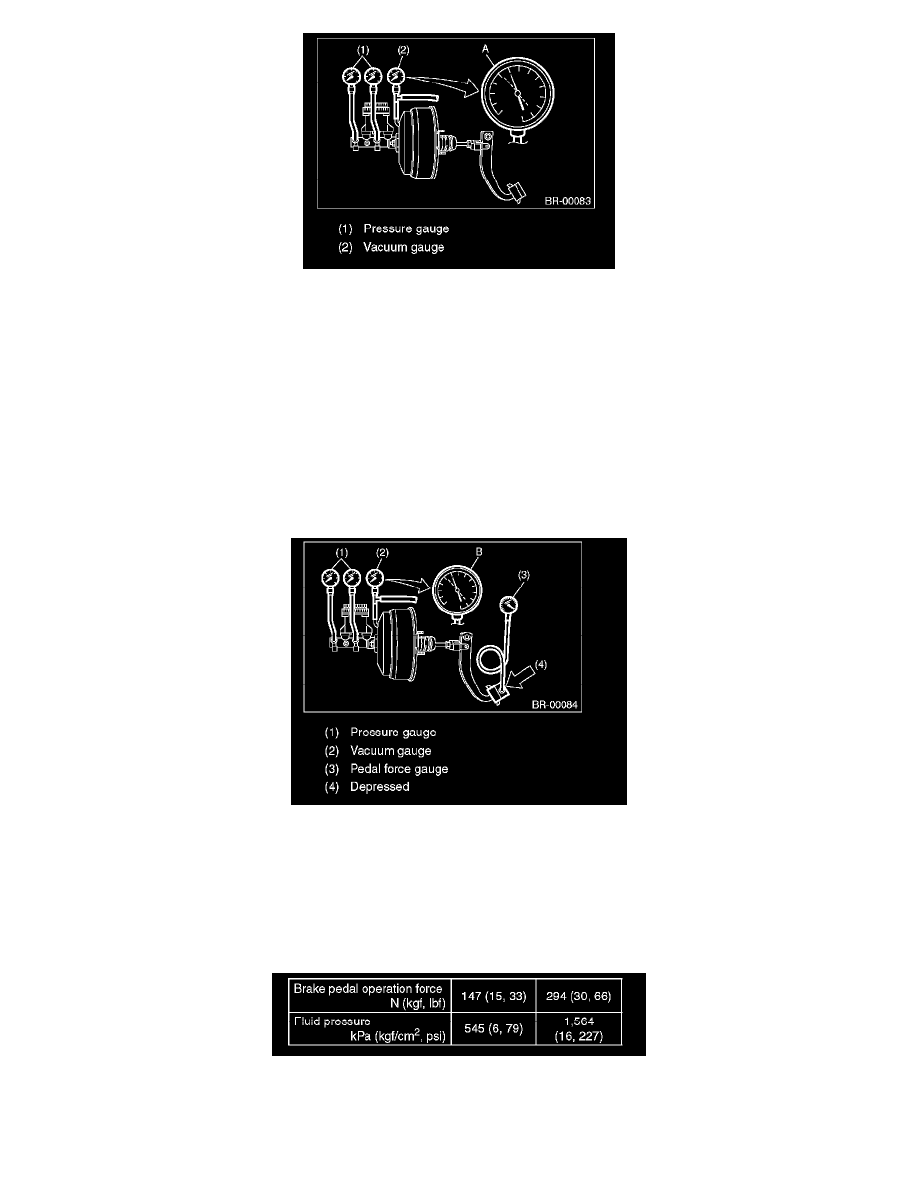Impreza WRX STI F4-2.5L Turbo (2008)

2) Stop the engine and check the gauge. If the vacuum pressure drop within 15 seconds after stopping the engine is 3.3 kPa (25 mmHg, 0.98 inHg) or
less, the function of brake booster is normal.
If faulty, the cause may be one of the following.
^
Check valve malfunction
^
Leak from vacuum hose
^
Leak from shell joint section or stud bolt welded section
^
Damaged diaphragm
^
Leak from valve body seal and bearing section Leak from plate and seal assembly section
^
Leak from poppet valve assembly section
^
LOADED AIR TIGHTNESS CHECK
1) Start the engine and depress the brake pedal with a pedal force of 196 N (20 kgf, 44 lbs.). Keep the engine running and keep the pedal pressed
until a vacuum of point B = 66.7 kPa (500 mmHg, 19.69 inHg) is indicated on the vacuum gauge.
2) Stop the engine and check the vacuum gauge. If the vacuum pressure drop within 15 seconds after stopping the engine is 3.3 kPa (25 mmHg, 0.98
inHg) or less, the function of brake booster is normal. If defective, refer to "AIR TIGHTNESS CHECK".
3) If the brake booster is faulty, replace it with a new part.
* LACK OF BOOST ACTION CHECK
Turn the engine OFF, and set the value of the vacuum gauge to "0". Then, check the fluid pressure when the brake pedal is depressed. The pressure
must be greater than the specification listed.
^
BOOSTING ACTION CHECK
Set the vacuum gauge reading to 66.7 kPa (500 mmHg, 19.69 inHg) with the engine running. Then, check the fluid pressure when the brake pedal is
depressed. The pressure must be greater than the specification listed.
